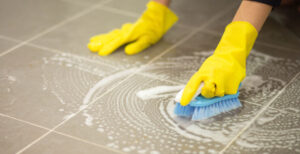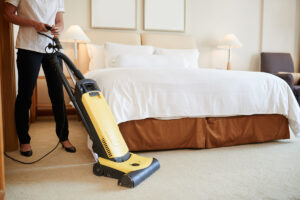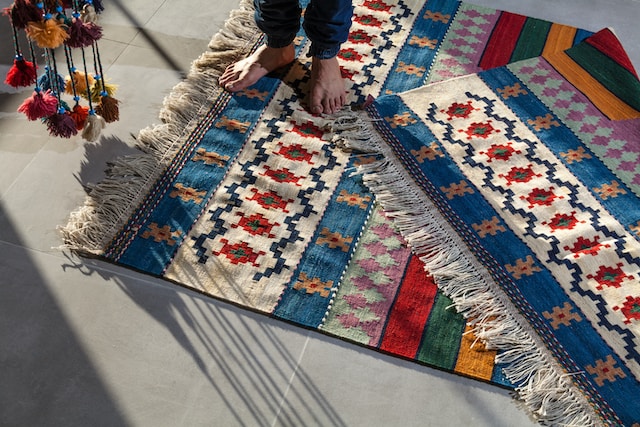Cleaning services can save time and money, maintain a healthy and hygienic environment, and improve productivity. They can also make a good first impression on customers and visitors to your business like Water Damage Restoration Salt Lake City.
A deep clean can also remove allergens and contaminants from carpeting and other surfaces, enhancing indoor air quality. Some cleaning companies offer mold remediation and smoke damage restoration services as well.

Residential cleaning services keep homes tidy and organized. These companies offer a variety of cleaning tasks, including dusting, vacuuming, mopping floors, and polishing mirrors and fixtures. They can also remove trash and perform laundry. These services are ideal for busy families who need help with daily chores. They can be hired on a one-time basis or scheduled regularly, such as weekly or monthly.
The cleaning industry is a multibillion-dollar business; getting your market share is easy. You can start by offering services in local neighborhoods and building a client base. Advertise on social media and put up fliers in your community. Once you’ve established your reputation, you can expand your offerings and increase your income. You can also hire staff to work for you, which makes it easy to grow your business and handle more customers.
If you’re looking for a new way to make money, consider starting a residential cleaning service. This lucrative business requires no startup investment, and you can offer your services hourly, flat, or calculated on a square footage basis. You can also provide add-on services like interior window washing and deep cleaning.
In addition to basic house cleaning services, many residential cleaners offer specialized options such as emergency spruce-ups for last-minute parent visits and move-out cleaning services. These cleanings remove and sanitize everything in, on top of, and behind items, room by room. It’s a great way to impress a landlord and get your deposit back.
Whether you’re in the market for a maid or an apartment cleaner, it’s important to communicate what you expect from them with your service provider. You might require a more thorough cleaning or an environmentally friendly service depending on your needs. You should also be clear about your price range and the areas you want cleaned.
Ensure that the cleaning company you’re considering has a quality assurance process. A quality cleaning service should have employees conduct quick checks in different areas to ensure they do well.
If your business is a restaurant, a hotel, or a leisure center, a clean and tidy environment will make a good impression on your customers. It will also help you to maintain a high level of customer satisfaction and attract new customers. However, maintaining commercial premises is a time-consuming and labor-intensive task. Hiring a professional cleaning service can save you the hassle of handling this job yourself.
A professional cleaning service will use specialized equipment and supplies to keep your commercial property clean and hygienic. They will also handle the disposal of waste and recyclable materials. In addition to general cleaning, a commercial cleaning service can also provide special services such as window washing and deep cleaning. They can also clean upholstery and carpets, decor elements, doors, walls, and other surfaces.
In addition to routine cleaning, a commercial cleaning company can offer ad-hoc cleaning services, such as waste removal and janitorial maintenance. They can also provide various sanitization services, such as wiping doorknobs and light switches to reduce the spread of germs. They can also disinfect restrooms, washroom fixtures, and partition walls.
Another advantage of hiring a commercial cleaning service is that they have many employees, so they can meet the needs of your business even during holidays or when other staff are absent. This is an important benefit, as it can prevent your company from losing money. It is also safer, protecting your customers and employees from germs and bacteria.
Unlike residential cleaners, commercial cleaners specialize in larger areas like schools and office buildings. They have the tools and experience to clean larger spaces more efficiently and thoroughly. They can also address problems before they escalate into bigger issues. For example, if a spill is not cleaned quickly, it can cause permanent damage to furniture.
Commercial cleaning companies can also save you the time and expense of training your staff. They have the expertise and equipment to tackle larger tasks, such as stripping and waxing vinyl and linoleum floors, buffing and burnishing tile and concrete floors, and deep cleaning hardwood and other porous surfaces. They can also take care of ad-hoc cleaning projects such as cleaning after building works and graffiti removal.
Sanitization is the process of cleaning a surface or area to be bacteria-free. It’s done by using a chemical solution that is non-toxic to humans. It’s also safe for the environment. Many businesses, such as hotels, manufacturing facilities, and healthcare facilities, use sanitization services to ensure the safety of their employees. This service is especially important during pandemics, as it helps reduce the spread of germs.
The best way to prevent the spread of germs is to sanitize frequently. This will remove most bacteria that dwell on hands and surfaces. Some common sanitizers include bleach, vinegar, and hydrogen peroxide. They can kill various bacteria, including the flu and SARS-CoV2.
Regular sanitization of high-touch surfaces is essential for keeping your workplace healthy. This will help reduce the number of sick days your employees take. It will also help to increase productivity and morale in the office.
In addition to sanitizing frequently, you should keep hand sanitizers handy when you can’t wash your hands. These sanitizers can help remove most germs from your hands in 30 seconds. They will not, however, kill viruses or fungi.
Disinfectants are more powerful than sanitizers and can kill viruses, fungi, and other harmful microorganisms. They also kill bacteria and remove odors from the surfaces they’re applied to. Disinfectants are commonly found in hospitals, schools, and other public areas.
Professional sanitization and disinfection services can save your business money in the long run. They will reduce the number of sick days your employees take and improve morale in the office. They can also help boost your brand’s reputation by ensuring your business is clean and sanitary.
When you hire a cleaning company for sanitization and disinfection, it’s important to choose one that has experience and is reliable. This will ensure that they are qualified to do the job correctly and will not leave behind any residue or lingering bacteria. They will also have the equipment and chemicals needed to perform the task.
Portable toilets are the hygienic way to go for construction sites, outdoor parking lots, and other work environments where indoor plumbing isn’t available. These convenient units are easy to set up and sanitize. They’re also a cost-effective alternative to building permanent restrooms on the site. Unlike traditional toilets, portable toilets flush waste from the toilet into a tank and are carried by pipes to a nearby sewer treatment plant. The waste is then safely degraded, leaving harmless byproducts.
To keep your workers and visitors safe, it’s important to have the toilets cleaned regularly. It’s important to clean the interior and exterior of the unit and sanitize all parts of the tank, including the lid and toilet seat. This process will ensure that the toilet is sanitary for the next user and will help to prevent the spread of bacteria.
The tanks in portable toilets contain a mixture of chemicals. Typically, blue dye is used in the tank to hide the appearance of waste, and the chemical turns green when the tank is full. The rest of the mixture consists of biocides to slow down bacterial action and fragrances to mask the foul smell.
A portable toilet is most often emptied at regular intervals. When it is time to open the waste, service technicians connect a power vacuum to the toilet’s output hole or holding tank and siphon the contents into a large truck. The trash is then safely transported to a sewer treatment plant, degraded, and treated.
To ensure your portable toilets are clean, hire a cleaning company with a good reputation. The best companies will clean the tank and sanitize all unit parts weekly to minimize odors. They will also inspect the units for any signs of wear and tear. They’ll spray the toilets with a disinfectant and wipe them down with a sanitizer to keep them safe for users. These cleaning services are a great way to improve the quality of your workplace and keep your employees happy.




